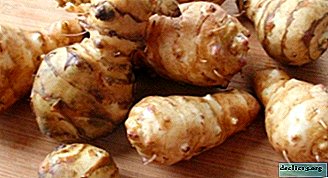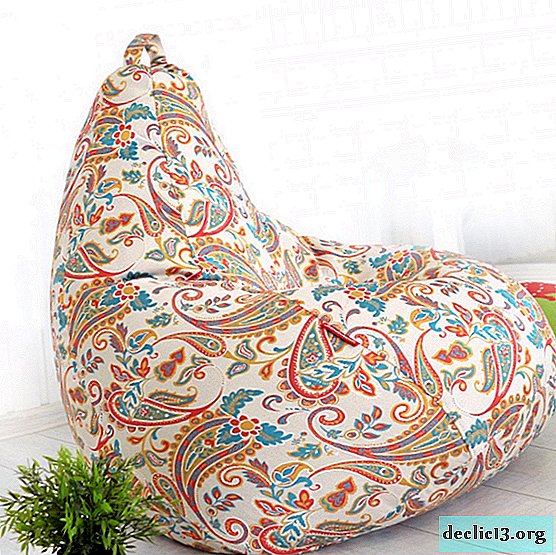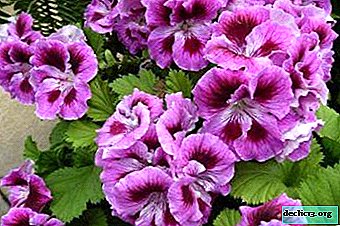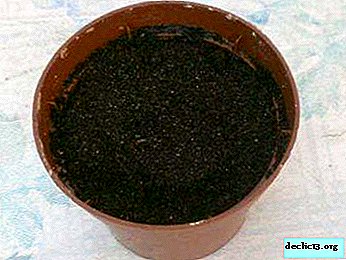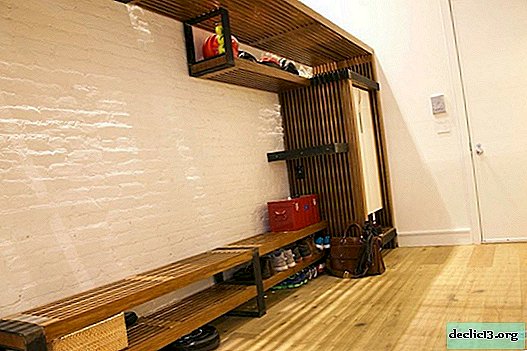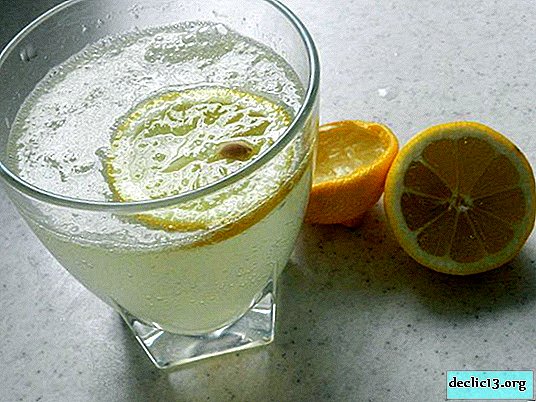Features of growing silver fleshy at home
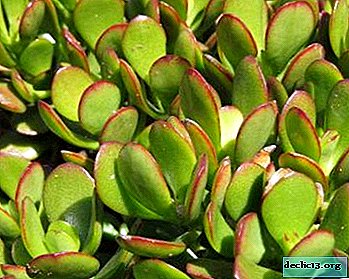
The collector of the collection of indoor succulents will never pass by the plants of the Tolstyankov family. Usually it is with them that love for decorative home succulents begins. The garden on the windowsill is replenished with new exotic flowers, but the good old fat woman, portulakova, portulakovidnaya or silver will always take its place of honor in it. The view is "honored", beloved and very easy to maintain. In this article we will tell in detail how to care for a fat girl of this type, how to breed and transplant it, what difficulties you may encounter when growing it.
Description, characteristics and photos of the plant
Crassula argentea / crassula portulacea (silver crassula, or portulaca crassula) is a succulent from the Tolstyankov family, a South African plant of arid places. It stores water in the juicy, thick tissues of the leaves and stem, like other succulents.
It has two variations of names. "Portulakova" she was named for the similarity of the leaves with the garden plant Purslane. "Silver" - for a light silvery shade of gloss on the leaves.
This crassula is very close to the classic "money tree" (oval or ovoid fatty). They are similar in origin, and in terms of cultivation, and in appearance. Crassula silver - a shrub that grows in nature up to two meters high. In the apartment, of course, the growth scale is more modest: usually from half a meter to a meter in height.
 Like ovate rossula, it can be cultivated in the form of a tree, the stems are lignified, the plant produces processes with aerial roots. Unlike ovates, the leaves of the silver thickworm can be more elongated. For an adult plant, a special "shriveled" bark is characteristic: it looks very unusual and decorative.
Like ovate rossula, it can be cultivated in the form of a tree, the stems are lignified, the plant produces processes with aerial roots. Unlike ovates, the leaves of the silver thickworm can be more elongated. For an adult plant, a special "shriveled" bark is characteristic: it looks very unusual and decorative.
It blooms infrequently (at home it may not bloom at all). Flowers are small, in white and pink shades, collected in inflorescences (sometimes several dozen flowers in one inflorescence).
Many are interested in the edibility of the plant Crassula portulacea. Despite its "garden" name, Purslane is not suitable for human consumption. Besides the name, it has nothing to do with portulaca (despite the fact that both plants are succulent "southerners"). No need to confuse them. Purslane is an annual plant from the Portulacaceae family, while Crassulaceae is a perennial succulent from the Crassulaceae family.
Attention! The leaves of houseworms contain arsenic. Crassules are not considered to be very toxic and dangerous plants, but experts also warn against the use of leaves inside.Crassula is one of the easiest plants to care for and maintain. Of course, there are certain "wishes" on her part, and they must certainly be fulfilled. However, they are simple, and if they are respected, the Purslane (silver) fatty will live on your windowsill for up to twenty years or more.
Home Care
| lighting | Needs good daylight, but without direct sunlight on the leaves. |
| temperature | In the summer - from 20 to 25 degrees of heat. In winter - no higher than 13-15 degrees (better - lower, but the lower limit is 5 degrees heat). He does not like temperature extremes, prefers stability. |
| location | For a fat woman, eastern or western windows are good. When placed on southern windows, shading may be required. |
| watering | Watering with settled water at room temperature as the earthen coma dries up. In the summer - a couple of times a week. During wintering - once a month. Follow the condition of the plant: if the leaves are wrinkled, extraordinary watering is necessary. Overflowing Crassule is very dangerous, the fat woman was originally a resident of arid regions. |
| air humidity | It does not require any measures in this regard: the plant is unpretentious and naturally undemanding to moisture. It is worth spraying and wiping the leaves from dust a couple of times a month (in the warm season). |
| top dressing | Fertilizing during the active growing season with fertilizer for succulents twice a month. It is good to combine it with watering. |
| the soil | Ready soil for succulents. Or mix the soil on your own at the rate of 1 part of turf soil, 3 parts of leaf and 1 part of river sand calcined in the oven. Be sure to add drainage (pieces of broken brick). |
| pruning | Can be trimmed for proper crown formation. |
View Features
Breeding
Crassula Purslane (silver) is propagated, like other crassulas, by cuttings. This is the most efficient and easiest method.
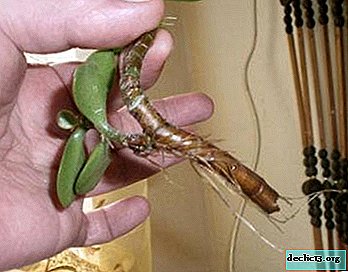 You can use the cuttings remaining after the forming pruning of the crown, or specially cut a twig about 15 cm long.
You can use the cuttings remaining after the forming pruning of the crown, or specially cut a twig about 15 cm long.- It is recommended to dry the stalk for about a day in a shaded place.
- Then we put it in a glass of water (it is best to add a little coal to avoid rot).
- When the roots appear, you can plant the stalk in the prepared substrate.
Since a fat woman of this species grows rapidly, then sometimes you can just neatly divide the bush when transplanting into two parts, and plant the two resulting plants in different containers.
We offer you to watch a video about the cuttings of the red leg:
Transfer
Transplantation to the plant requires regular. For a young plant - annual, for an adult - once every two to three years.
Important! A transplant is a “transshipment” of a plant into another container without disturbing the earthen coma on the roots. The root system of the rosules is gentle, this type of transplant helps to avoid root injury.Do not forget about a suitable pot: a flowerpot that is too deep is not suitable for a fat woman. Need more flat, but wider tanks. This is explained by the fact that the crassula has a superficial root system, it does not grow in depth, but develops in breadth.
We suggest you watch a video about a money tree transplant:
Possible difficulties
Difficulties can arise if the owner does not comply with the simplest rules for the maintenance of a fat woman. The main factors are humidity and lighting.
- "Fill "Crassula - Be prepared to get root rot from a plant.
- Too dried - the leaves wilted, wrinkled, the plant is bad.
- Direct rays of the sun can burn leaves. If, on the contrary, there is not enough light, the tree will begin to discard the foliage.
The solution to the problems is the urgent elimination of mistakes in caring for the fat girl.
Which plants look like a silver fleshy?
- Crassula coralline. Crassula corallina. Also a fat girl, but what! A very exotic look that a keen collector will not refuse. The crassula is very miniature, with unusual small leaves decorated with green dots. It all looks like coral twigs in greenish-silver tones. Beauty!
- Crassula tecta. Crassula tecta. Another super-exotic, awesome fat girl in your collection. True, when you see her, at first you will doubt that this is Crassula. Thick small leaves are densely dotted with silver papillae, which gives the plant a slightly alien appearance and charm.
- Crassula Ovata Minor. Fat girl Ovata Minor. Reminiscent of a pulp or Purslane ovata, but the size is very small. The plant is fleshy, with dense leaves and stems, however, the leaves reach no more than one and a half centimeters in length. Decorative, interesting and suitable for creating compositions with other small succulents.
- Haworthia comptoniana. Haworthia is graceful. Do you like the juicy large leaves of the Purslane Crassula? Would you like something similar, also with silver splashes? Great, graceful haworthy will suit you. The bush, consisting of large thick pointed leaves at the ends with silver streaks on the surface - is very nice and decorative.
- Adenium obesum. Adenium is fat. Reminds a fat woman with a thick lignified trunk and dense leathery leaves. However, adeniums are grown because of their chic flowering: large flowers of various shapes and colors. They require more labor and knowledge in breeding and care than fat women. However, an experienced amateur will get a lot of pleasure by creating their own collection of adeniums of various varieties.
Crassula Purslane (silver) is a simple and familiar plant of Russian window sills. Its popularity is not declining, although dozens of exotic, previously unknown names appeared on the home flora market. The unpretentious and cozy tree is worthy of you to place it on your windowsill. It, in turn, will delight you, without requiring complex care in return!

 You can use the cuttings remaining after the forming pruning of the crown, or specially cut a twig about 15 cm long.
You can use the cuttings remaining after the forming pruning of the crown, or specially cut a twig about 15 cm long.
